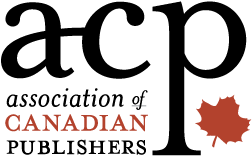The price of a book, like the price of every other commercially sold item, is determined by two factors: costs and competitive market forces. Publishers price their books high enough so that they cover the costs and make a profit, if possible, and low enough so that buyers will choose their books instead of a competitor’s. Costs drive prices up; competitive forces drive them down. Thus works a free market.
It is not at all clear to me why people assume that because the currency values are now the same, the prices should be the same. Canada and the US are two different countries, with different tax structures, labour regulations, funding systems. They are two different markets, with two different sets of costs, and two different sets of competitive forces.
For books that originate in Canada, this distinction comes into play at every stage. For example: freelance editors in Canada, who collectively offer very high-quality work, charge more than American freelance editors (who in turn charge more than editors in India). If you are publishing a Canadian book, and you need an editor who knows what a Timbit is, you are going to have to pay a Canadian editor. Up goes the cost of your book. Canadian publishers face higher costs across the board, but if they wish to sell into the US, they must address the competitive forces that keep book prices lower in the US. Traditionally, they have priced their books lower for the US market, and counted on higher volumes to offset the smaller margin.
The noise around this issue last fall arose, not primarily around Canadian-published books, but around US books coming into Canada. In those cases, most of the costs are incurred in the US, and so consumers might expect to pay US prices when the dollars are at par. But there are still differences that come into play. For example, the minimum wage is significantly higher in Canada, so the cost of warehouse staff in Canada who handle the book when it comes in from the US and ship it to Canadian stores is higher than in the US. Higher distribution costs mean higher prices.
For historical reasons, books, unlike most other products, present their dual (or multiple) prices to consumers, and so publishers and booksellers got these questions first, when manufacturers and retailers of, say, lipstick, or tractors, did not. Booksellers and publishers – two of the smallest- margin business models around – were somewhat bemused last fall to find their stock in trade, with its very small or non-existent profit levels, used as a symbol by the media and politicians wishing to exploit the larger issue of consumer concern about prices.
At some level, we were reassured to see books figure so prominently in the list of things that matter to Canadians. And, from the point of view of Canadian-owned publishers, our books did not generally carry as great a disparity between the two prices as imports did. But fallout from the dual-price uproar landed on everyone, and ultimately forced most Canadian-owned publishers to establishing a single price for both markets. That price must be low enough to keep the book competitive in the US, so margins on Canadian sales small to begin with, have now shrunk further. This has been particularly challenging for publishers of children’s books, where costs can be as high as for adult books, but prices are significantly lower, and margins are always razor- thin. In the marketplace that is most important to us – our home market – we are now getting less than we did for our books, and we wonder at what point the public appetite for lower prices will make it impossible for Canadian-owned publishers to compete.
